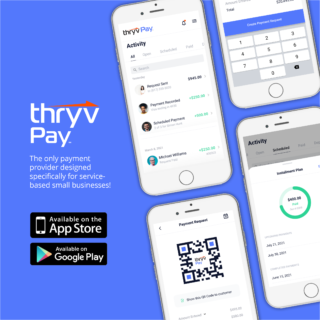Pricing your virtual event, class or workshop can be a risky business. There is a delicate balance between charging too much and not asking for enough.
Here are some considerations that will help you land at the right price.

Free: 3 Master Strategies for Raising Your Prices
Use this guide to help you decide when and how to increase what you charge, and improve your bottom line.
Save NowLook to Recuperate Your Costs
Hosing a virtual event, while less expensive than most in-person events, is still going to cost you. When identifying a price for your online offering, at a minimum you should be looking to cover your costs.
Some costs you may incur when launching a virtual offering could include the following.
Event Host
If you’re not planning on being the on-screen talent for your event, are you going to leverage the skills of a charismatic staff member or do you plan on outsourcing and hiring a moderator? Either way, you’ll need to compensate them for their work and their time.
Event Software
Did you purchase any new software or equipment to run and manage the event? Various event-management software programs can bring your event to the next level and streamline tasks like ticketing and live-streaming, but they come at a price.
Thryv users can download Zoom from the Thryv app store for their virtual happenings. Combining the two platforms not only allows for easy event streaming through Zoom, but with Thryv you can manage registrations, send automated event reminders and follow up with surveys. The free version of Zoom allows for events 40 minutes long with up to 100 participants.
Marketing & Promotion
Don’t discount money spent on marketing your event. You put a lot of work into creating the perfect online experience for your patrons, you want to ensure that people attend. 60% of virtual event organizers turn to social to drive registrations. Organic social can help get the word out but paid media such as search ads, display ads and social media ads can boost attendance.
This isn’t a definitive list of all costs associated with virtual events. When planning, set a budget and record your personal costs. If you plan on hosting more than one virtual class or workshop, identify which costs are part of the initial set up and which bills will be reoccurring.
Consider the Perceived Value of Your Event
Just because your event is happening from behind a computer screen, doesn’t mean you aren’t providing value to your patrons. The type of event you are hosting and how potential event-goers perceive the value provided will impact how much you charge. Particularly consider if your new virtual event is an alternative solution to a typically in-person event, how the value of the event is being impacted by going virtual.
For example, if you’re hosting an annual workshop that typically provides networking opportunities, you need to consider that. A virtual platform, while able to provide networking to an extent, may be perceived as less valuable by your patrons.
Alternatively, if you typically teach a creative writing course in person, switching to virtual sessions may be perceived as equally informative, and maybe even more convenient by attendees.
If you aren’t sure which event format best fits your needs, check out our last blog on planning your first virtual event.
Test Out a Variety of Pricing Options

Virtual events are evolving, more rapidly this past year than they ever have before. Don’t get stuck on the notion that you have to stick to a flat rate.
Some pricing options to consider include the following:
Regular registration
This is your standard ticket price, your baseline. This is the standard price you believe your event is worth.
Membership discounts
If you run an organization, like a gym, that provides annual or monthly memberships, your members should receive a discount. Additionally, if classes or workshops are typically included in their membership, your virtual offering should be as well.
VIP or early bird
Consider offering VIP or early bird pricing options during a limited window. This can encourage potential event-goers to commit to attending your event early. A limited time offer at a discounted price can build excitement around your event and provide a sense of urgency to register.
Pay what you want
For some events, the pay what you want or value-for-value model could be considered. This is a pricing strategy where buyers pay their desired amount for a given commodity, sometimes this means some registrants attend for free. It is possible to set a minimum price or provide a suggested value.
This model can work if it is the first time you are hosting an event and you are looking for input. You can gain valuable insights into how people value your content based on what they are willing to pay in comparison to your suggested price.
Additionally, with COVID, your typical event base might not have the means to purchase expensive event tickets. Consider potential long-term value by providing this option.
Listen to Feedback
After your successful event, always ask your attendees for feedback.
- Did event-goers feel the event was worth the price? Did you charge too much, too little?
- Are there any areas where you should scale back in order to reduce the price?
- What features was your event missing?
- Would they attend another event?
Don’t be afraid to change registration fees based on the feedback you receive. If you do end up changing the cost for future events, let people know the change in price was influenced by the feedback you received.
Conclusion
Finding the right price may require some trial and error, and that’s okay. Pricing for any event, let alone a virtual or hybrid one, is not an easy task. The best practice is to consider all aspects of the event and offer a price that you believe is a fair trade-off for your time and effort, and for the value your event provides.
3 Master Strategies for Raising Your Prices
Here’s what you need to keep in mind.





